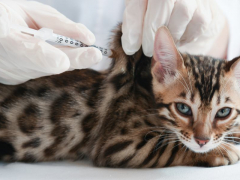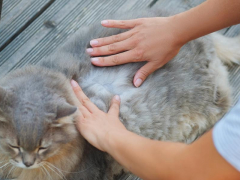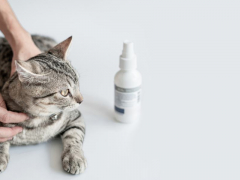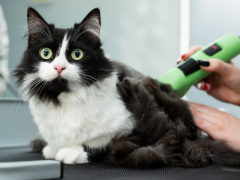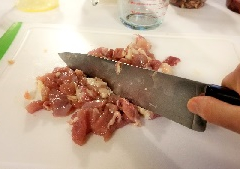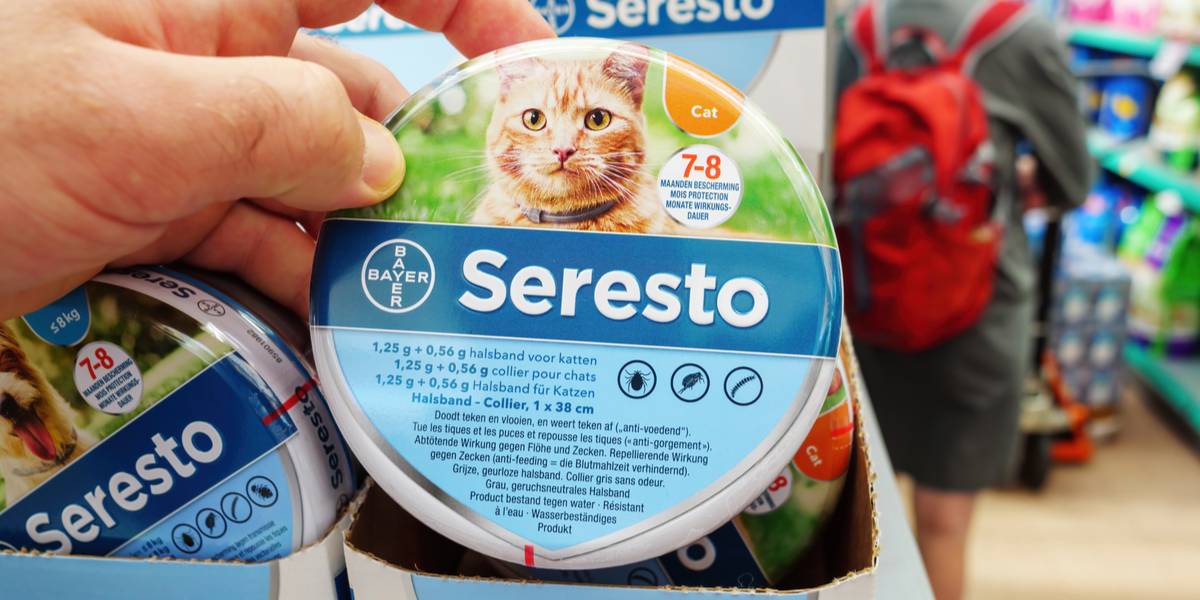
The Seresto collar is a flea and tick collar for cats manufactured by Elanco Animal Health (previously by Bayer Animal Health). In this article, you’ll learn how Seresto works, what parasites Seresto works against, safety concerns and side effects to be aware of, and some frequently asked questions.
Seresto Collar for Cats Overview

About Seresto Collar for Cats
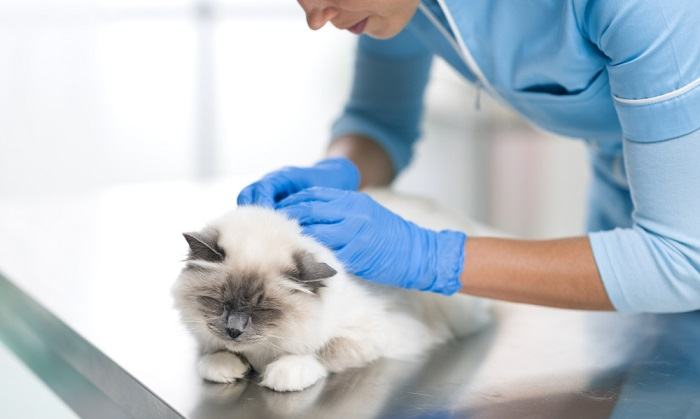
The Seresto collar contains two active ingredients: imidacloprid and flumethrin.
Imidacloprid is an insecticide that acts on the nicotinic acetylcholine receptors of the central nervous system of a flea, leading to central nervous system (CNS) impairment and death. These receptors in insects have a much higher affinity, or desire to bind, to imidacloprid than to similar receptors of vertebrates like cats and dogs.
Imidacloprid is largely effective against adult fleas only. It does not have additional efficacy against fleas eggs and only an indirect effect against larvae, though it can kill adult fleas quickly before they can lay eggs.
Flumethrin is a pyrethroid insecticide that conveys its action through voltage gated sodium channels in nerve tissue. Its action leads to repeated nerve impulses that lead to death of the insect. It also has a very high affinity for invertebrate (insect) nerve tissue, lending to its safety for use in dogs and cats.
As an acaricide, flumethrin is principally effective against ticks. It is able to kill all stages of the tick, including the adult, larva, and nymph forms.
What Does the Seresto Collar Do for Cats?

The Seresto collar repels adult fleas and ticks. It can kill adult fleas within 24 hours after initial application and ticks within 48 hours. According to the manufacturer, Seresto can also impact flea infestations by affecting flea larvae that have come in contact with the collar.
In regard to kill time, there are certainly other topical products that work faster to kill fleas and ticks.
The Seresto collar’s main advantage over many other flea and tick prevention products is that it provides repellency against fleas and ticks while also killing any that come in contact with a cat wearing the collar. Many other common topical and oral flea and tick products do not provide repellency and require the insect to bite the skin in order to die.
Cats with a high sensitivity to flea bites or cats with a flea bite allergy may find more relief with a product that prevents flea bites.
The Seresto collar has a couple of other advantages over other common flea and tick collars. The first is that it claims an efficacy that lasts for eight months, which is longer than any other flea/tick product on the market. The second is that unlike some (much cheaper) flea and tick collars, the Seresto collar more effectively treats the whole cat’s body versus just the areas closest to the collar, providing better flea and tick control.
Seresto achieves this through the drugs being secreted in low doses by way of a special polymer matrix design of the collar. This allows the two active ingredients to be effectively absorbed by the oils of the skin continuously. While some degree of this may remain for a limited time without the collar, removing the collar may not provide the same degree of repellency and treatment and may only extend the collar life by a small comparative amount.
The dog Seresto collar is also indicated for treating and preventing sarcoptic mange. This is a skin condition caused by the mange mite Sarcoptes scabiei, which is in the same family as ticks. Sarcoptic mange is most often transmitted by foxes in the area that carry the parasite.
Sarcoptic mange is rare in cats and uncommon now in dogs because of products like Seresto, Revolution, and drugs of the isoxazoline class. While the Seresto collar does not carry a label for sarcoptic mange in cats, this could be an off-label consideration for outdoor cats especially if foxes are in the area.
Side Effects of Seresto Collar for Cats

The Seresto collar kills adult fleas and ticks for eight months.
It can be common for cats not used to wearing a collar to mildly or occasionally scratch at a collar.
Signs to look for that this is more of a concern include redness or irritation on the skin where the collar is present as well as any signs of hair loss.
The manufacturer indicates that mild reactions like these are possible. In these cases, removal of the collar and washing the area with a non-irritating shampoo (like baby shampoo) or dish soap to remove any residue should be sufficient. However, if signs of redness, irritation, or hair loss persist, the manufacturer recommends pursuing veterinary care.
The Seresto collar is not intended to be chewed on or ingested and should not come in contact with the eyes.
If you are ever concerned that your kitty may have developed side effects while using a Seresto collar, or if an overdose is suspected, make sure to contact your veterinarian, the ASPCA Animal Poison Control Center (1-888-426-4435) or Pet Poison Helpline (1-855-764-7661) immediately for further advice.
Because of the nature for cats to jump onto high, precarious surfaces, like branches, fences, etc., the use of any collar, especially in an outdoor cat, can present a risk for strangulation if the collar catches on something.
The Seresto collar is designed with a quick-release mechanism that allows the weight of the cat to widen the collar, so that the cat will slip out of it. It is always important to realize that such quick-release mechanisms can never have a 100% guarantee and there is always a risk involved using any collar on a kitty.
Seresto Collar for Cats Dosage
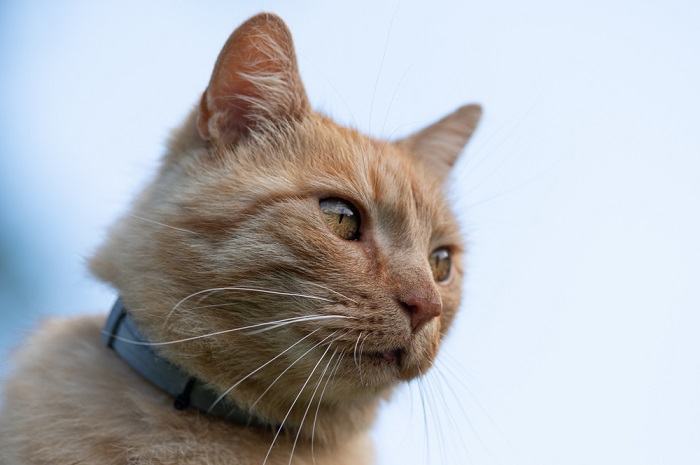
Your cat can continue to wear their regular collar as long as the Seresto collar is in contact with the skin.
The Seresto collar is applied for use every eight months and can be used on cats and kittens 10 weeks of age and older.
To properly apply the collar, first remove it from its protective bag and unroll it. The collar will not fit every cat immediately out of the packaging and may require trimming and adjustment.
Place the collar around your cat’s neck, insert the end through the buckle, then tighten it until just two of your fingers can fit comfortably between the collar and your cat’s neck. (This is a good rule of thumb for any kind of encircling, potentially constricting object, like a collar or bandage.)
Pull any excess collar through the loop and trim the collar to leave one inch of overlapping length. The manufacturer indicates that a greater length can be left for growing kittens.
It is always best to frequently assess the status of the collar and readjust anything if needed.
Conclusion

The Seresto collar for cats is a flea and tick collar that carries the main advantages of lasting longer than any other product at eight months, as well as providing repellency against fleas and ticks, which many other topical products cannot do.
Its long-lasting nature does make it a more expensive product up front. While Seresto does have a break-away type of feature in its design, collars should always be used carefully in cats, as they can present a risk of strangulation if the safety feature fails.
The Seresto collar can be a good option for folks who do not want to apply a monthly topical product and in cats where preventing flea and tick bites (i.e., cats with flea bite allergy) is a priority, making the repellency ability of Seresto advantageous.
Drug Dosing Disclaimer: We are only able to provide doses for medications that are FDA approved for use in cats and only as the label guidelines dictate. For medications that are used off-label we can only provide guidelines and safety information for use. Safe and appropriate dosing for off-label medications can only be determined by a primary care veterinarian.
We encourage you to work with your veterinarian to determine if a particular medication is appropriate for your cat. Changing or adjusting a dose for your cat on your own without consulting with a veterinarian can carry risk. We do not encourage use of medications prescribed for human use in pets without first consulting with a primary care veterinarian.
